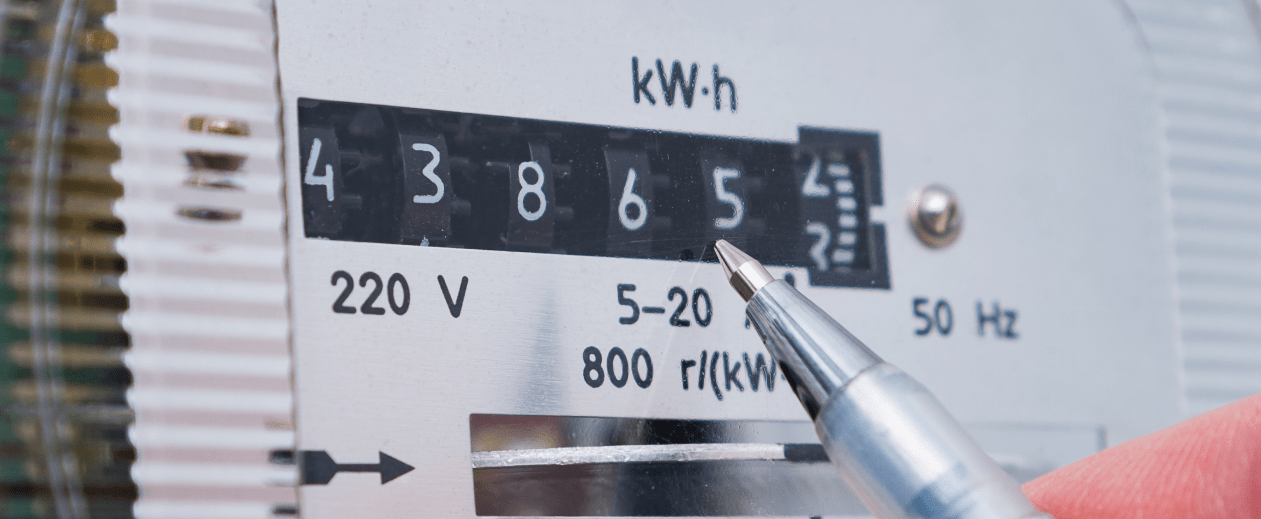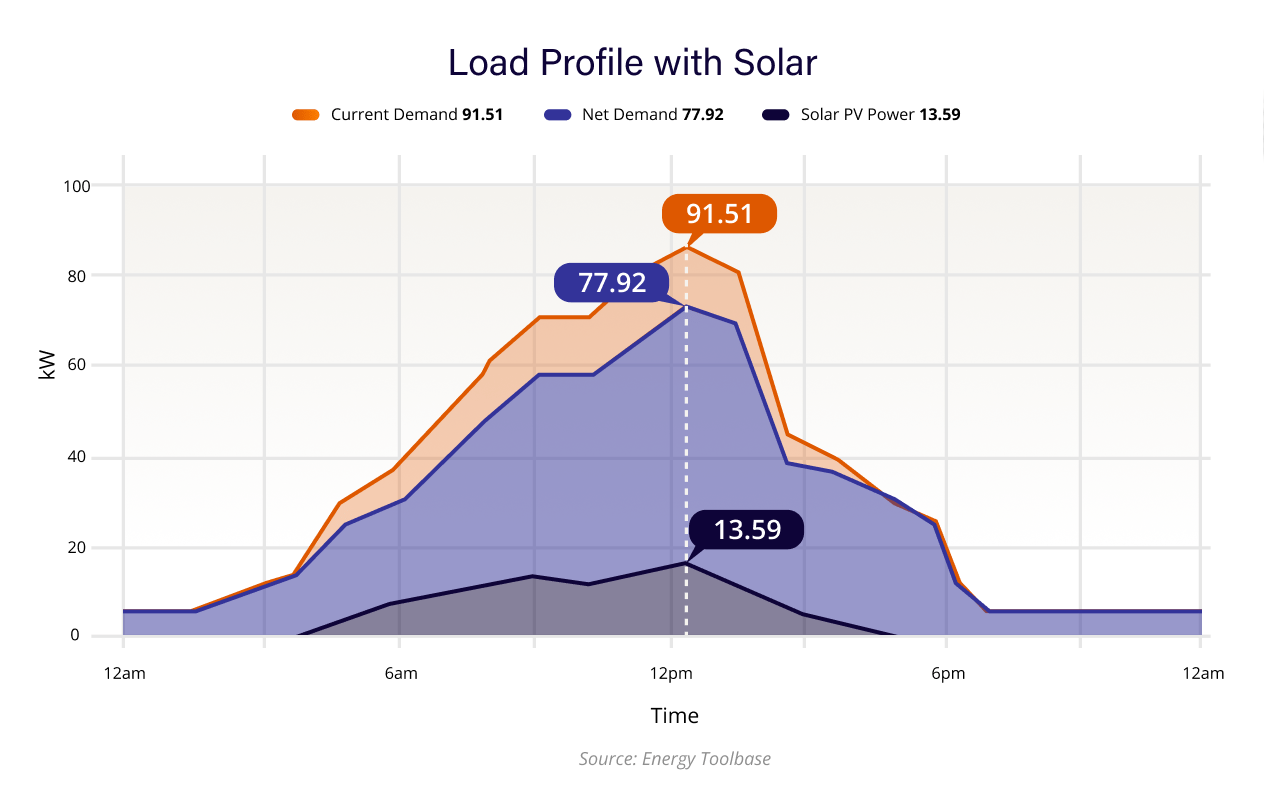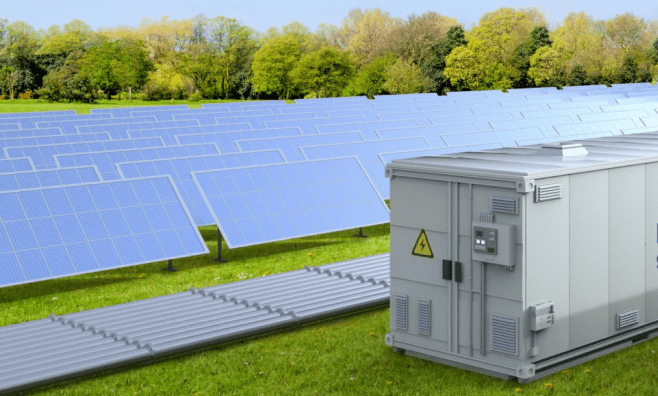



Our energy systems are a balancing act between supply and demand. Many utility companies across the U.S. are mandated to keep energy flowing and available to meet ratepayers’ needs around the clock ― during frigid winter mornings and hot summer evenings when demand soars.
In an effort to minimize grid stress, many utilities use different approaches to encourage customers to spread their electricity consumption over time. One method is through demand charges.
Simply put, demand charges are additional fees that utilities charge commercial and industrial customers for maintaining a reliable electricity supply to meet their higher-capacity loads.
These tariffs were introduced in the late 1800s as a way for system operators to recover the fixed costs of distribution from energy-intensive customers during the rise of industrial America.*
Since then, utilities have expanded the application of demand charges to other commercial customers and even small businesses ― prompting economists to question whether or not this rate structure makes sense in today’s electric system.
But for now, demand charges are here to stay.

In most U.S. energy markets, commercial customers pay for both the electricity they use and their facility’s demand. It’s important to understand these measurement parameters in order to fully grasp demand charges.

Energy consumption
is measured in kilowatt-hours (kWh) and represents the total amount of electricity your facility uses in a billing period. This is what the electric meter records as the dials turn.

Demand
is the rate of energy consumption. Measured in kilowatts (kW), this is the amount of power needed to run your business at any given moment.
A popular analogy to explain this is driving a car. The rate at which you’re consuming electricity (kW) can be compared to your speed (mph), while your consumption (kWh) is similar to the total distance you travel (miles). The demand charge is how fast you want to be able to drive ― bigger engines and higher top speeds increase a vehicle’s price tag.

Since commercial and industrial customers have higher peak loads, any spike in demand requires the grid to work harder to deliver electricity, leaving power suppliers to rely on peaker plants that can quickly ramp up production. But these peaker plants run mainly on oil and natural gas, and are expensive to build and maintain. So, utilities impose demand tariffs to help cover costs.
It’s difficult, if not impossible, to predict when a power spike will occur. As such, utilities base demand charges on the highest amount of electricity delivered to a facility within a specific period. In the U.S., these timeframes ― called demand intervals ― are typically 15 minutes, but can also be 30 or 60 minutes, depending on the utility’s rate structure.
The demand interval with the highest spike in energy consumption (kWh) sets the maximum power demand (kW) for the billing period.
To calculate the charges, utilities multiply the ratepayer’s kW demand by their per kW rate. Demand charges are flat, published rates that may fluctuate with the price of peaker plant fuel, but remain generally consistent. Any customer subject to time-of-use (TOU) rates will see an additional charge if their demand spike occurs when the grid is stressed.
Therefore, the two main types of demand charges are:*


Most ratepayers understand the notion of being charged for electricity based on the amount consumed. However, it can come as a shock when business owners realize ― thanks to demand charges ― that lowering their monthly kWh consumption might reduce the energy charges on their bill, but it won’t necessarily lower their entire electric bill.
To illustrate this point, let’s compare two medium-sized businesses:
A boutique clothing store has longer hours of operation, resulting in higher electricity usage but lower demand since the primary energy requirements are lighting and HVAC. The second company is a dental office with shorter hours and no weekend electricity needs. Although it has lower energy requirements overall, the dental practice has a higher demand, since the medical equipment draws more power during brief periods. This means, even though the clothing boutique uses 5,000 more kWh of energy, it pays less for electricity than the dental practice.

These figures are for example purposes only. Your charges will vary, based on your region, utility provider and other factors. Sunnova’s commercial team can provide you with a customized quote, based on your facility’s needs.
If reducing overall consumption isn’t enough to lower demand charges, what can a company do?

Business owners who are able to modify their energy loads or change what equipment they have running at the same time can better balance their usage to help reduce a spike in demand. Rescheduling a facility’s most energy-intensive activities to lower-demand times can also avoid on-peak charges. Consider a bakery that turns on the ovens, lights and HVAC each morning. Powering on these appliances simultaneously generates a spike in demand, while staggering these activities can spread it out.

For business owners who use the bulk of their electricity during the day, solar PV can help reduce a facility’s demand from the grid. This can be especially beneficial during hot summer days when TOU rates apply. Solar production often peaks between 10 am and 4 pm, so a restaurant with a lunch rush or a retail shop that gets a majority of foot traffic at midday may benefit the most.

Many business owners don’t have the flexibility to stagger their demand or shift their usage to off-peak hours. A fine dining restaurant that serves only dinner six nights a week can’t avoid using electricity during the dinner rush. For these types of facilities, pairing solar panels with energy storage makes the most sense.

When a solar battery is attached to a commercial solar array, business owners can save the energy their panels produce and use it at a later time. A solar battery can therefore decrease peak demand by charging up when energy demand is low, typically in the daytime, and strategically discharging during a company's demand surge. Since the battery is able to recharge from solar when the sun is most intense, it can avoid drawing from the grid, which helps reduce electricity costs.
With solar plus storage that is appropriately configured, commercial and industrial customers may not need to shorten their high-usage periods or shift their loads. Anytime their energy consumption is expected to exceed their maximum power demand, the solar battery will automatically discharge and can protect a company from demand charges, providing there’s enough energy stored.
What’s more, any business with solar panels installed ― and an energy demand that coincides with peak solar production ― may fall short of the generation needed to avoid a spike in demand on rainy or densely cloudy days. By drawing the stored energy, business owners can reduce the impact of an intermittent energy supply and maximize the value of their solar investment.
As we dive into examples, it’s important to understand that no two businesses are exactly alike. Even two shoe stores next door to each other with the same hours and inventory won’t use the same kWh of electricity. From employee behaviors to efficiency measures, hundreds of factors influence a company’s load profile, meaning the graph that shows energy consumption patterns on an hourly, daily and monthly basis.
Also, while many businesses are able to see some degree of demand charge reduction by adding solar and solar plus storage, some loads are nearly impossible to shave.
For instance, a data center running servers 24 hours a day or a three-shift business that never turns down the lights both have relatively flat load curves, devoid of major spikes and dips.

A facility with this type of linear load profile would likely need to reduce its entire demand curve in order to reduce these associated utility charges.
Let’s take a look at a hypothetical stand-alone retail shop, which consumes a majority of its electricity during the day. The load profile illustrates a fairly consistent bell curve during business hours — similar to many stand-alone facilities.
On any given day, an average retail shop’s demand, meaning the amount of electricity it draws from the grid (before solar), is 91.5 kW. After adding solar, the PV production generated 13.6 kW of clean energy that same day, bringing the shop’s net demand down to 77.9 kW.* By reducing the retail store’s overall electricity needs, the utility will charge the shop based on this lower recorded peak demand, and the customer can see reduced demand charges.


Consider the fact that solar PV has the potential to reduce both sides of the utility bill: consumption and demand. A facility’s total electric consumption (kWh) can be minimized by the more solar power it generates and uses. And, if the solar array is producing energy at the same time the peak demand surges, a commercial customer can effectively lower the highest point of their demand curve to minimize demand charges.
It’s important to keep in mind, however, that demand savings from solar-only systems is difficult to predict, as it largely depends on factors beyond the facility’s control ― weather, unusual spikes in usage, etc.
The bottom line? Commercial PV-only systems may slightly reduce demand charges for a business owner, but there’s no guarantee, for example, if it’s rainy or particularly overcast. Solar PV works best for commercial customers who can shift their peak demand hours to coincide with maximum solar production, usually midday. Otherwise, without energy storage, there’s no way to reduce the consumption curve if an influx in energy consumption occurs before or after the sun’s most intense hours.
Now, let’s consider the same hypothetical retail shop, but with solar and battery storage.
The retail shop’s electricity demand on any given day is still 91.5 kW. The same commercial solar array produces 13.6 kW of clean energy that reduces the shop’s need for grid electricity.* By adding a battery to store the excess PV generation, the green overlay illustrates how the battery can strategically discharge and reduce the demand peak even more, by almost 28 kW. The net demand is now 50 kW, roughly half of the shop’s starting electric demand. When battery reserves dip below the present level, the battery is recharging.

By adding a battery to the PV system, the business owner saw an added reduction of 35.8%.
These figures are for example purposes only. Your charges will vary, based on your region, utility provider and other factors. Sunnova’s commercial team can provide you with a customized quote, based on your facility’s needs.
How much could this retail shop reduce its bill? If the utility charges a flat rate of $15/kW for demand, let’s calculate:
No Solar or battery:
91.51 x $15 = $1,372 (default bill)
This is what the business owes for demand charges
PV-only system:
77.12 x $15 = $1,168
Demand charges after installing solar

Solar PV + battery
49.97 x $15 = $749
Demand charges after installing solar with battery storage
Based on these calculations, the retail business could reduce its demand charges by $623 on any given month by adding solar plus storage. By applying these savings over 12 months, the company could potentially see nearly $7,500 in bill reductions per year.

As this example proves, a commercial solar battery is capable of providing power to a facility during the time a customer would typically record its highest kWh usage. By doing this, a solar plus battery storage system can reduce the demand visible to the utility and minimize any kW demand spikes that would result in higher demand charges.
Across the nation, 67% of utility rate structures have demand charges, according to Genability.* Therefore, no matter what state or utility territory your business operates in, there is a good chance you’ll experience demand charges.
By installing solar with battery storage for your business or industrial facility, commercial customers can take advantage of a more consistent, ready-to-go solution for reducing demand charges.
Discover your company's potential savings with solar plus storage.